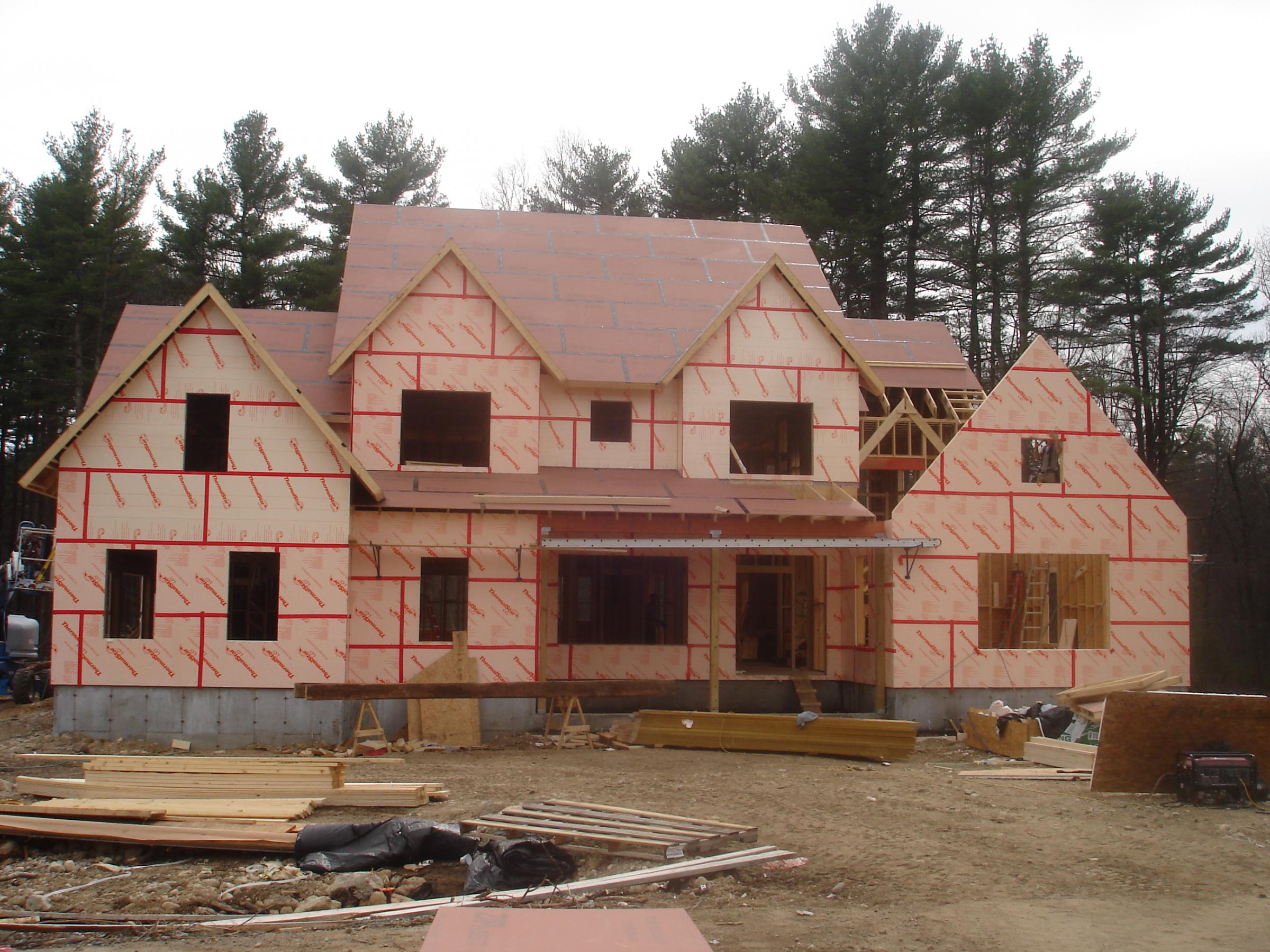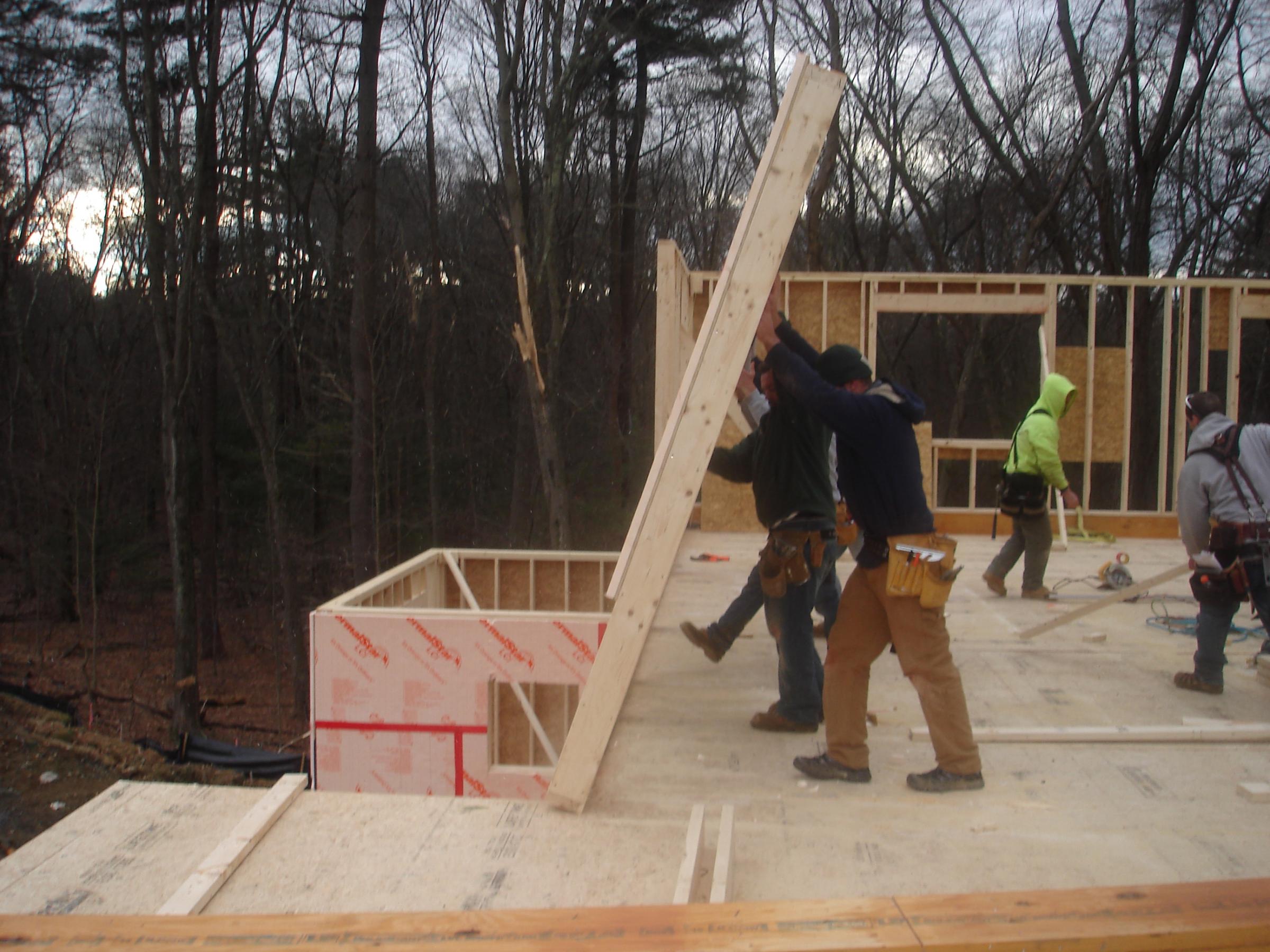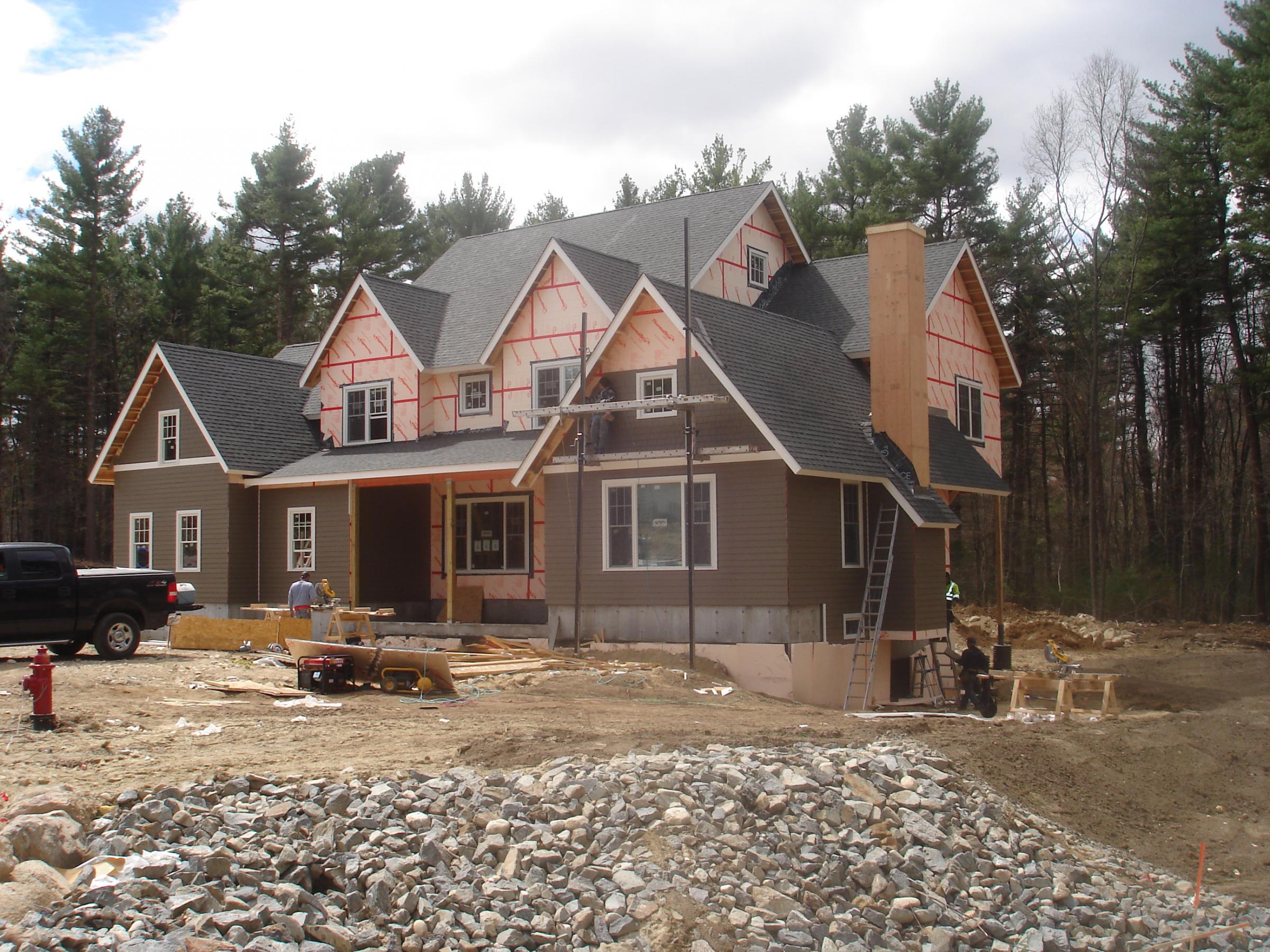THE CASE FOR CI (CONTINUOUS INSULATION)
Over the last few years, New England and other cold regions of the US, have been seeing a growth in securing rigid insulation on the exterior of buildings. It first started appearing in commercial buildings and was driven primarily by the International Building Codes which required steel stud buildings to place rigid foam on the exterior of the structure.

Why? The steel studs are great conductors of temperature and these thermal bridges were conducting the heat from the inside to the outside in the winter and the reverse in the summer in New England. This was making the insulation in the cavities between the studs practically useless and causing the R-value of the walls to drop by 50%. So they decided to skip the insulation in the cavity (unless you want it for sound suppression) and put all the insulation on the outside .
This insulation method is now gradually entering the residential marketplace driven by the newer International Residential Codes where in 2009, it started recommending a 2x4 wall with R-13 in the cavity and R-5 on the exterior as an alternative to a 2x6 wall with R-20 insulation in the cavity in the colder climate zones. The thinner wall actually is a better insulated wall than the thicker 2x6 wall. Huh? In what modern math is 13 plus 5 more than 20?
Not math but, basic building science! If you take the wood stud wall framed at 16 inches on center, you end up with 25-30% of that wall being wood, not insulation! That wood acts as a conductor (not as bad as steels studs though) which channels the heat out of the building. This can reduce your insulative value by 15-20%. So, by putting rigid insulation over the sheathing and studs you eliminate( or reduce) this bridging effect. (called thermal bridging or thermal shorts).
Consider this- they have calculated that a 2x4 wall with R-13 insulation in the cavity actually is only an R-11 and a 2x6 wall with R-20 insulation is actually performing at an R-15.67. What happens when we add rigid insulation to the exterior?

Let’s take a 2x4 wood framed wall with R-13 fluffy stuff in the cavity and R-5 on the exterior to minimize the bridging and the air infiltration . The combined R-value is almost an R-18(R-17.26), while a 2x6 wall without external insulation measures an R-15.67! So the 2x4 wall with continuous insulation actually performs better than the 2x6 wall without CI! This can save you money in construction as well as giving you more space inside. The exterior insulation on the wall can make it perform up to 50% better than the same wall without.
In addition to reducing heat loss and increasing the R-value of the wall system, there are other benefits to putting insulation on the outside. These include reducing the chance for the moisture in the cavity (water vapor) to condense on the inside face of the sheathing (Dew Point) which can lead to mold and mildew, reduce the effectiveness of the cavity insulation and ultimately shortening the life of the wall through rot. Other benefits include less air infiltration which can lead to needing a smaller HVAC system, lower noise levels and more. And it is easier to achieve these goals with the insulation on the outside rather than the inside since you are working with a flat plane rather than trying to insulate between the floors and elsewhere.
This is the short answer as to why the new building codes are increasing the amounts of CI required. The 2012 IECC will require R-20 or R13+5 for Climate Zones 3, 4 and 5 and it require R-20+5 or R-15+10 for Climate Zones 6,7 and 8. Continuous Insulation (CI) is the wave of the future to help us further reduce the energy use of our buildings.
Fortunately, there has been a tremendous amount of experimentation and development of new materials and methods for installing CI on buildings. The products vary from Rigid Foam to Mineral Wool to Cork; some are easier to install, have higher R-values and cost less than others but the installation method is pretty much the same. Next-generation products combining structural sheathing with rigid foam to make Insulated Structural Sheathing, are now on the market. Atlas ThermalStar LCi-SS (http://www.ufpi.com/thermalstar ),OX SIS http://oxengineeredproducts.com/styrofoam-sis-structural-insulated-sheathing/ , and Huber ZipR (http://www.huberwood.com/zipsystem/products/zip-system-rsheathing )all have Insulated Structural Sheathing products. I am sure that there will be more soon.

A great source for learning about the materials and methods for effecting this is found at Building Science Corporation (www.buildingscience.com/ )and Green Building Advisor (www.greenbuildingadvisor.com) to name but two of several sources for information.
Brice Hereford is a graduate of the Boston Architectural College’s Sustainable Designer Certificate Program. His interest in energy efficiency goes back to the energy crisis in the 1970s when he was helping to build some of the first energy efficient townhouses in the Boston area. Focused on the building envelope; he works with builders, architects and others, encouraging the building community to build increasingly energy efficient and resilient buildings. He lives in the Berkshire Hills of western Massachusetts.
Our Mission
NESEA advances sustainability practices in the built environment by cultivating a cross-disciplinary community where practitioners are encouraged to share, collaborate and learn.






Add comment